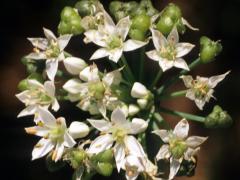Invasive Species: Allium vineale, Wild Garlic
Wild garlic is an invasive perennial plant that originates from a bulb. Plants range from 11 to 35 in. (30 to 90 cm) in height and have tubular leaves. In May to June, plants produce purple tubular flowers that are less than 0.25 in. (5 mm) long. These flowers are eventually replaced by bulblets, either completely or partially. Wild garlic is native to Europe and thrives in fields, meadows, waste grounds, and other disturbed areas.
What are invasive species and why should we be concerned about them?
Taxonomy: Scientific and Common Names for This Species
Liliales > Liliaceae > Allium vineale L.
Synonym(s): none
Allium vineale – USDA PLANTS Profile
Distribution Maps
Wild garlic – The reported distribution of this invasive species across the United States. (Source: Invasive Plant Atlas of the United States)
Up-to-the-minute distribution maps and why they are important
Reporting This Invasive Species
What is the best way and place to report the occurrence of an invasive species?
How to report an invasive species sighting to EDDMapS – Early Detection & Distribution Mapping System
EDDMapS – Report an invasive species to EDDMapS
Cooperative Extension Offices – Find your local Cooperative Extension office on this map provided by USDA
How to Identify
This invasive species can be identified by looking for the characteristics described in the paragraphs that follow.
Plant
An invasive perennial plant that originates from a bulb and ranges from 11 to 35 in. (30 to 90 cm) in height.
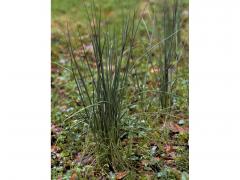 |
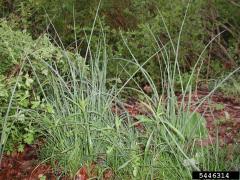 |
| Ohio State Weed Lab Archive, The Ohio State University, bugwood.org | Leslie J. Mehrhoff, University of Connecticut, bugwood.org |
Foliage
Plant has tubular leaves.
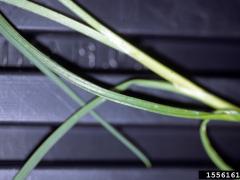 |
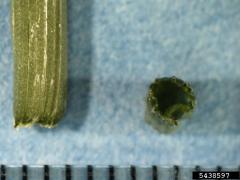 |
| Ohio State Weed Lab Archive, The Ohio State University, bugwood.org | Bruce Ackley, The Ohio State University, bugwood.org |
Flower
In May to June, plants produce purple tubular flowers that are less than 0.25 in. (5 mm) long.
|
|
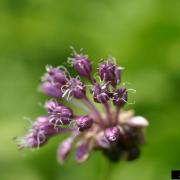 |
| Ohio State Weed Lab Archive, The Ohio State University, bugwood.org |
Leslie J. Mehrhoff, University of Connecticut, bugwood.org |
Fruit
These flowers are eventually replaced by bulblets, either completely or partially.
 |
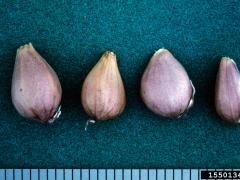 |
| Ohio State Weed Lab Archive, The Ohio State University, bugwood.org | Ken Chamberlain, The Ohio State University, bugwood.org |
Native Species That Resemble Wild Garlic
All species within this genus, including natives, are designated as noxious weeds.
Allium canadense, wild onion – Images at invasive.org
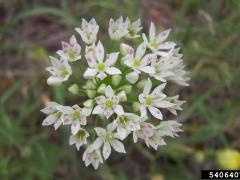 |
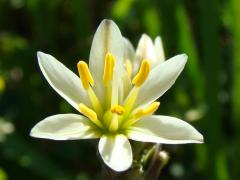 |
| Karan A. Rawlins, University of Georgia, bugwood.org | Rebekah D. Wallace, University of Georgia, bugwood.org |
– Images at invasive.org
| bugwood.org | bugwood.org |
Additional Images for Wild Garlic
Wild garlic – Images at Invasive.org
Learning Resources for Wild Garlic
Additional Information, Biology, Control and Management Resources
Control and management recommendations vary according to individual circumstances. Location, habitat, weather, and a variety of other conditions are factors that help determine the best treatment choice. To find the safest and most effective treatment for your situation, consult your state’s land-grant institution. If you will use chemicals as part of the control process, always refer to the product label.
United States Land-Grant University System – Find your land-grant university’s College of Agriculture, Cooperative Extension Service, or other related partner on this map provided by USDA.
Weed of the Week – USDA Forest Service
Weed Identification Guide – Virginia Tech
Flora of North America – efloras.org
Ohio Perennial & Biennial Weed Guide – Ohio State University
Jepson Herbarium – University of California

